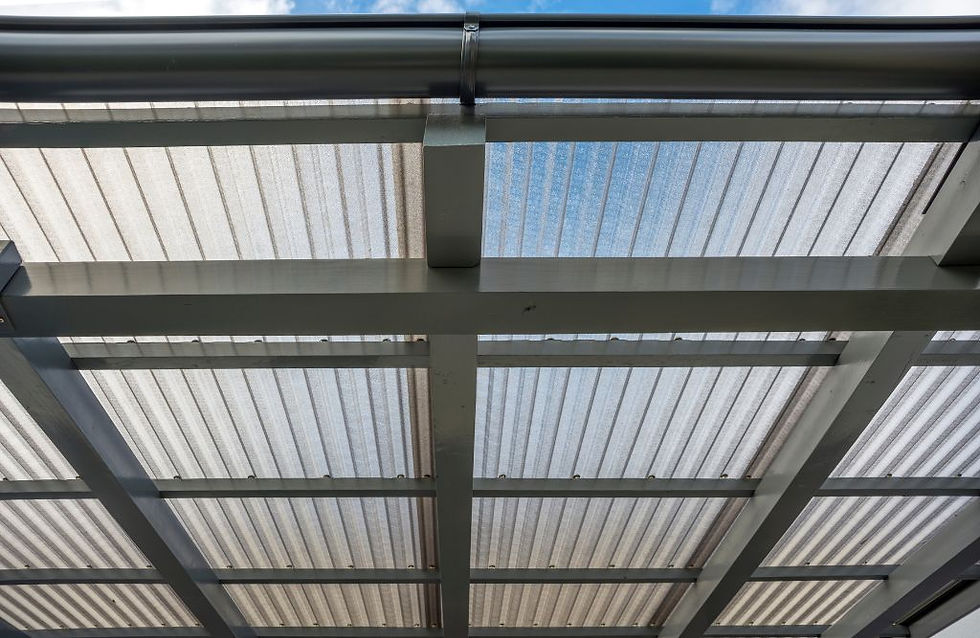Choosing the Right Industrial Roller Doors for Your Sydney Business
- Evan Javier
- Aug 6
- 4 min read
When running a business in Sydney, especially in sectors like manufacturing, warehousing, logistics, or even automotive, choosing the right industrial infrastructure plays a critical role in day-to-day success. One often-overlooked yet essential element? Your choice of industrial roller doors.

More than just an entryway, industrial roller doors affect your security, energy consumption, workflow efficiency, and even compliance with local safety regulations. Whether you're upgrading an old system or setting up a new facility, selecting the right door isn't just about functionality—it's a long-term business decision.
Why Your Choice of Roller Door Matters
Security, efficiency, and durability—these are the pillars of any productive industrial space. Industrial roller doors Sydney suppliers provide a wide variety of options designed to meet diverse business needs. A good-quality door can:
Enhance security: Deter unauthorised access with reinforced steel and locking mechanisms.
Improve energy efficiency: Keep internal temperatures consistent, cutting down on heating and cooling costs.
Increase workflow efficiency: Speed up loading and unloading with rapid open/close functions.
Reduce maintenance: Durable materials mean fewer breakdowns and longer lifespans.
In short, a smart roller door choice saves you time, money, and frustration in the long run.
Types of Industrial Roller Doors to Consider
Sydney’s varied industries require different solutions. Here are some common types of industrial roller doors available to suit your facility’s specific needs:
Steel roll-up doors: Ideal for warehouses, factories, and secure storage. They offer great strength and weather resistance.
High-speed doors: Perfect for distribution centres and food storage facilities, where fast access is essential.
Insulated doors: Recommended for temperature-sensitive environments. These help control internal climate while improving energy efficiency.
Fire-rated doors: Required in buildings where fire safety compliance is crucial. These doors compartmentalise areas and delay fire spread.
Speak to a local expert in industrial roller doors Sydney to assess which type aligns best with your operational environment.
Key Considerations When Choosing a Roller Door
Before purchasing, consider these essential factors:
1. Size and Clearance
Ensure the door fits your opening with enough room for tracks and the rolled-up curtain. Larger openings might require custom-fit solutions.
2. Frequency of Use
If the door will be used dozens or hundreds of times daily, invest in a high-duty-cycle motor and durable components built for frequent use.
3. Insulation Needs
Evaluate how much insulation is needed based on what your business stores or produces. In industries like food processing or pharmaceuticals, temperature control is non-negotiable.
4. Wind Rating and Weatherproofing
Given Sydney’s sometimes unpredictable climate, your roller doors should withstand strong winds and prevent water ingress during storms.
5. Automation and Safety Features
Look for doors with smart openers, remote access, motion sensors, and emergency release systems to streamline use and improve safety.
Installation and Compliance
Working with experienced installers is crucial to ensure your roller doors meet local building codes and insurance requirements. A certified supplier of industrial roller doors Sydney will:
Assess your building’s structure for compatibility
Ensure proper anchoring and load-bearing support
Comply with Australian Standards for commercial and industrial doors
Provide post-installation training for your staff
Poor installation can lead to safety hazards and long-term operational issues, so choose professionals with proven industry experience.
Maintenance Matters
Like any heavy-duty equipment, industrial roller doors require regular maintenance. Preventive servicing can help avoid major malfunctions and extend the door’s life.
Typical maintenance includes:
Lubricating moving parts
Checking springs and tension
Inspecting motors and control systems
Cleaning debris from tracks
If your door is acting sluggish or noisy, don’t wait. Call in a specialist in industrial roller doors Sydney for a prompt inspection and repair.
Budgeting for Industrial Roller Doors
Prices can vary significantly based on size, material, and automation level. While it might be tempting to go for the cheapest option, remember: lower upfront cost often means higher long-term maintenance expenses.
Be sure to factor in:
Installation fees
Electrical work for motorised systems
Annual servicing costs
Energy savings from insulated doors
Getting quotes from multiple reputable industrial roller doors Sydney suppliers is the best way to find a balance between cost and quality.
Tailoring to Your Industry
Your choice of door should reflect your industry’s demands:
Factories & warehouses: Prioritise durability, safety sensors, and wide openings for forklift traffic.
Logistics & freight terminals: Fast open/close times and large apertures are key.
Cold storage & food facilities: Go for thermal insulation and hygiene-compliant finishes.
Car parks & showrooms: Choose aesthetic, ventilated, and see-through panel doors where visibility matters.
Customisation options—from colour to window panels to logo prints—are available for those looking to align doors with their brand identity.
Final Thoughts
Industrial roller doors are more than just entry points—they’re a vital part of your business's operations. By carefully considering your requirements, working with trusted suppliers, and investing in quality components, you can future-proof your facility and ensure seamless daily operations.
Ready to upgrade or install new industrial roller doors Sydney? Begin by listing your requirements, comparing reputable installers, and making an informed investment. It’s a decision that pays off in efficiency, safety, and peace of mind.








Comments